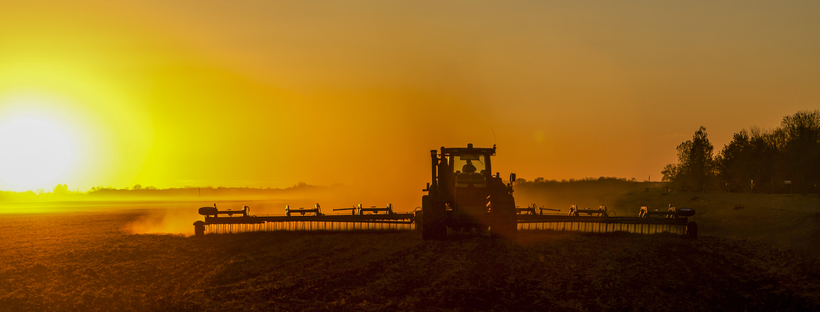06 May Texas artist brings life to museum habitat
The Triceratops on display in the Pioneer Trails Regional Museum appears to have a new home — but in reality, it shows what the area looked like millions of years ago. Photo by Brad Mosher.
A landscape mural has been added to an exhibit at the Pioneer Trails Regional Museum that literally paints a new image of life in North Dakota.
Behind the standing fossil of a triceratops in the museum, there is now a mural designed to add a visual idea of the way southwest North Dakota looked millions of years ago.
While the climate is currently semi-arid and cycling through periods of drought, it was very different when the dinosaurs ruled the region.
Texas-based artist Pamela Riddle created the display and helped to put in place April 15, in time for the museum open house and an earlier unveiling to museum board members and supporters.
“She did the art, the conception, the art herself, and then she worked with a gentleman, who did the printing, and then he installed the panels,” explained Jean Nudell, the museum administrator.
“It’s the environment that our Triceratops would have lived in to recreate that scene.
“That’s why it’s like the swamp with the palm trees. There’s no grass, and because that at the time they lived, that’s what this part of North Dakota would have looked like,” the museum official explained.
Artist Pamela Riddle of Dallas was present April 15 for the unveiling of her latest work, which provides a visual backdrop for the Triceratops on display in the Pioneer Trails Regional Museum. Photos by Brad Mosher.
According to Nudell, about 25 people came between the two open houses. We did one for community partners and stakeholders and museum members in the afternoon and then open to the general public later in the evening.
The administrator also said that there was a good response to the addition during the open houses. “The people seem to really like it. They were very impressed. I think people appreciated having the artist here to explain the process some. So yeah, I think it went well,” she said.
“We’re always looking for ways to enhance the experience for the visitors. So, you know it takes money and time,” Nudell added.
Riddle said that she did the artwork on canvases that were a specific width because they had to be printed on panels that needed to be sent to Bowman, then reassembled.
The artist was contacted about a year ago for the project. “I’m always interested that it’s a hobby of mine kind of I actually, I volunteer with our natural science museum in the fossil lab and they help put the fossils there so it just sort of makes sense.”
Previously, one of the projects she has worked on was creating a visual artistic habitat for “Texas Nellie”, a plesiosaur, that was an aquatic predator. That is now part of a display at the Heard Museum in Phoenix.
Riddle is based in Dallas.
When it comes to the work displayed in Bowman, it is specially designed. “It’s all one image digitally. And then Tom works with a lot of ours that worked digitally, and he prints at large format, one I have no idea what that involves other than I have to get it to him in a certain way.
“He tells me how to set the file and then he prints it in sheets. It’s a constrained size because of the printer. So whatever with his printer is as the width of the panel and there were nine for this. So they were all tiled together and he divides it to where he makes marks where you can line it up.
Nudell said the result is seamless. “They did a pretty excellent job of that. You don’t see the lines. They blend together very well. So it does look like one continuous piece and that what was what we were hoping for.”
According to the museum, the Badlands in the area represent the last geographical times from the Cretaceous Period, which was home to the dinosaurs, giant marine reptiles and extinct exotic plants. Research teams associated with the museum have been working in these ancient environments collecting fossil vertebrates, invertebrates and plants to try to reconstruct what was present here millions of years ago.
The museum also studies, collects and curates vertebrates, invertebrates and plants from 73 million years old marine deposits up to the youngest deposits of the area, which are 28 million years old. Some of the animals that have been found are mosasaurs, plesiosaurs, dinosaurs and early mammals that include camels, rhinoceroses, horses, and giant pigs. The demise of the dinosaurs and the changes in local paleoenvironments are just a couple of areas in which the Paleontology Department has been researching over the past decade.




